Text
Is your back pain holding you back from enjoying life? Here's how to take control.

Are you tired of the constant burden of back pain that limits your ability to enjoy life to the fullest? If so, you're not alone. Back pain is a prevalent condition that affects millions of people in the United States and around the world. The good news is that there are steps you can take to regain control over your life and find relief from this debilitating condition. In this article, we will explore effective strategies and lifestyle changes that can help you manage and alleviate back pain, allowing you to reclaim your joy and mobility.
Table of Contents
Understanding Back Pain
Common Causes of Back Pain
The Impact of Back Pain on Your Life
Seeking Professional Help
Lifestyle Changes for Back Pain Relief
Exercise and Physical Activity
Posture and Body Mechanics
Ergonomics in Everyday Life
Stress Management and Relaxation Techniques
Weight Management and Nutrition
Pain Management Strategies
Alternative Therapies for Back Pain
Surgical Options for Chronic Back Pain
Prevention and Maintenance
Conclusion
1. Understanding Back Pain
Back pain can manifest in various forms, from a dull, constant ache to sharp, shooting pain. It can affect different areas of the back, such as the lower back or upper back, and may be accompanied by other symptoms like muscle stiffness or limited range of motion. Understanding the nature of your back pain is the first step towards finding the right solutions for relief.
2. Common Causes of Back Pain
Back pain can have various causes, including muscle strains, herniated discs, spinal abnormalities, osteoarthritis, and poor posture. Identifying the underlying cause of your back pain is crucial in determining the appropriate treatment options.
3. The Impact of Back Pain on Your Life
Living with chronic back pain can significantly impact your daily life, making it difficult to engage in activities you once enjoyed. It can limit your mobility, affect your mood, disrupt sleep, and hinder your overall quality of life. Acknowledging the impact of back pain is essential in motivating yourself to seek solutions.
4. Seeking Professional Help
When dealing with back pain, it's important to consult with a healthcare professional who specializes in spine health. They can conduct a thorough evaluation, diagnose the root cause of your pain, and recommend suitable treatment options. Don't hesitate to seek professional help, as early intervention can lead to better outcomes.
5. Lifestyle Changes for Back Pain Relief
Making certain lifestyle changes can help alleviate back pain and prevent its recurrence. These changes include maintaining a healthy weight, quitting smoking, improving posture, using proper body mechanics, and avoiding prolonged sitting or standing. Small adjustments to your daily routine can have a significant impact on your back health.
6. Exercise and Physical Activity
Regular exercise and physical activity are crucial for managing back pain. Engaging in low-impact exercises like walking, swimming, or yoga can strengthen the muscles supporting your spine, improve flexibility, and alleviate pain. Always consult with a healthcare professional before starting any exercise program.
7. Posture and Body Mechanics
Maintaining good posture and using proper body mechanics can reduce strain on your back and alleviate pain. Practice sitting and standing tall, with your shoulders relaxed and your spine aligned. When lifting objects, bend at the knees and use your leg muscles, rather than straining your back.
8. Ergonomics in Everyday Life
Ergonomics focuses on optimizing your work and living environments to promote comfort and reduce the risk of injury. Make sure your workspace is ergonomically designed with an adjustable chair, proper desk height, and adequate lumbar support. Apply ergonomic principles to other areas of your life as well, such as your car seat and mattress.
9. Stress Management and Relaxation Techniques
Stress and tension can exacerbate back pain. Incorporating stress management techniques, such as deep breathing exercises, meditation, or mindfulness practices, can help relax your muscles and reduce pain. Find activities that promote relaxation and make them a part of your daily routine.
10. Weight Management and Nutrition
Maintaining a healthy weight is essential for back health. Excess weight puts added stress on your spine and can worsen back pain. Adopting a balanced diet that includes fruits, vegetables, whole grains, and lean proteins can provide the nutrients your body needs to support a healthy spine.
11. Pain Management Strategies
Various pain management strategies can provide temporary relief from back pain. These include over-the-counter pain medications, topical creams, hot or cold packs, and transcutaneous electrical nerve stimulation (TENS) therapy. Talk to your healthcare professional about the most suitable options for your specific situation.
12. Alternative Therapies for Back Pain
Alternative therapies such as chiropractic care, acupuncture, massage therapy, and herbal supplements have shown promise in relieving back pain for some individuals. These therapies focus on restoring balance, reducing inflammation, and promoting healing. Discuss these options with a qualified practitioner to see if they are suitable for you.
13. Surgical Options for Chronic Back Pain
In cases of chronic back pain that doesn't respond to conservative treatments, surgery may be considered. Surgical interventions, such as spinal fusion or disc replacement, aim to address the underlying cause of the pain and provide lasting relief. Consult with a specialist to explore surgical options if necessary.
14. Prevention and Maintenance
Preventing back pain and maintaining a healthy spine is essential for long-term well-being. Practice good body mechanics, maintain a healthy weight, engage in regular exercise, and prioritize self-care. Regular check-ups with your healthcare professional can help identify any potential issues early on.
15. Conclusion
Living with chronic back pain can be challenging, but it doesn't have to define your life. By understanding the causes of back pain and implementing appropriate lifestyle changes, you can take control of your condition and find relief. Remember to seek professional advice, prioritize self-care, and stay proactive in managing your back health. Enjoying a life free from the limitations of back pain is within your reach.
Frequently Asked Questions
1. How long does it take to find relief from back pain?
The duration of relief from back pain varies depending on the underlying cause and the treatment approach. It's important to consult with a healthcare professional to develop a personalized plan tailored to your needs.
2. Can back pain be prevented?
While it may not be possible to prevent all instances of back pain, adopting a healthy lifestyle, maintaining good posture, engaging in regular exercise, and practicing stress management techniques can significantly reduce the risk of developing chronic back pain.
3. Are there non-surgical alternatives for back pain relief?
Yes, there are various non-surgical alternatives for back pain relief, including physical therapy, medication, alternative therapies, and pain management techniques. Consult with a healthcare professional to determine the most appropriate approach for your specific condition.
4. How do I know if surgery is necessary for my back pain?
Surgery is typically considered a last resort for chronic back pain that doesn't respond to conservative treatments. Your healthcare professional will evaluate your condition, considering factors such as the severity of your painand the impact on your daily life, before determining if surgery is necessary. They will discuss the potential benefits, risks, and alternatives with you to make an informed decision.
5. Can stress contribute to back pain?
Yes, stress can contribute to back pain. Tension and muscle tightness caused by stress can increase the discomfort in your back. Incorporating stress management techniques, such as relaxation exercises and mindfulness practices, can help alleviate both stress and back pain.
Get Access Now:
In conclusion, if you find yourself held back by constant back pain, it's time to take control. By understanding the causes, making lifestyle changes, seeking professional help, and implementing effective strategies, you can find relief and regain the joy of life. Don't let back pain define your days—take charge and embrace a life free from limitations.
#backpain#backpainrelief#backpainsucks#backpaintedglass#backpainvannuys#BackPainRedondoBeach#BackPainManhattanBeach#BackPainHermosaBeach#backpainhelp#backpains#backpainting#backpaintreatmentdubai#backpaincure#backpainbegone#BackPainHelpUSA#backpaindubai#backpaintreatment#backpainexercises#backpaintheraphy#backpainformum#backpainted#backpaint#backpaingone#backpainreliefonitsway#mobilityexercises#calfworkout#anklemobility#mobilitytraining#calvesworkout
0 notes
Text
#backpain#backpainrelief#backpainsucks#backpaintedglass#backpainvannuys#BackPainRedondoBeach#BackPainManhattanBeach#BackPainHermosaBeach#backpainhelp#backpains#backpainting#backpaintreatmentdubai#backpaincure#backpainbegone#BackPainHelpUSA#backpaindubai#backpaintreatment#backpainexercises#backpaintheraphy#backpainformum#backpainted#backpaint#backpaingone#backpainreliefonitsway#mobilitytraining
0 notes
Text
Tired of living with constant back pain? Discover the key to finding relief.

Tired of Living with Constant Back Pain? Discover the Key to Finding Relief
Are you tired of enduring the daily struggle of living with constant back pain? If so, you're not alone. Back pain is a common ailment that affects millions of people worldwide, hindering their ability to perform daily activities and enjoy life to the fullest. The good news is that there are effective strategies and remedies available to help alleviate back pain and restore your quality of life. In this article, we will explore the key factors contributing to back pain, lifestyle changes to reduce discomfort, and various treatment options for finding lasting relief. Say goodbye to the limitations imposed by back pain and embrace a life free from constant suffering.
Table of Contents
Understanding Back Pain
Causes and Contributing Factors
Lifestyle Modifications for Back Pain Relief
Exercise and Physical Therapy
Pain Medications and Injections
Alternative and Complementary Therapies
Surgical Interventions for Chronic Back Pain
Preventive Measures to Avoid Recurrence
Importance of Maintaining a Healthy Weight
Managing Stress and Promoting Relaxation
Ergonomics and Posture Correction
Strategies for Better Sleep
Improving Back Health through Nutrition
The Role of Heat and Cold Therapy
Conclusion
1. Understanding Back Pain
Back pain can manifest in various forms, ranging from a dull, persistent ache to sharp, debilitating pain. It commonly affects the lower back but can also extend to the upper back or neck. Understanding the underlying causes of back pain is crucial in determining the most suitable approach for managing and treating it effectively.
2. Causes and Contributing Factors
Back pain can be caused by several factors, including muscle strains, herniated discs, spinal stenosis, osteoarthritis, and poor posture. Other contributing factors may include obesity, sedentary lifestyle, heavy lifting, and repetitive motions. Identifying the specific cause of your back pain is essential for targeted treatment.
3. Lifestyle Modifications for Back Pain Relief
Making certain lifestyle modifications can significantly alleviate back pain. These include maintaining good posture, engaging in regular physical activity, avoiding prolonged sitting or standing, and using proper body mechanics when lifting heavy objects. Additionally, incorporating stress-reducing techniques, such as meditation or yoga, can help manage pain and promote overall well-being.
4. Exercise and Physical Therapy
Regular exercise and physical therapy play a vital role in back pain management. Strengthening the core muscles, improving flexibility, and enhancing posture through targeted exercises can alleviate pain and prevent future episodes. Physical therapy sessions tailored to your specific condition can provide expert guidance and support throughout your recovery journey.
5. Pain Medications and Injections
In cases of acute or chronic back pain, pain medications may be prescribed to provide temporary relief. Nonsteroidal anti-inflammatory drugs (NSAIDs), muscle relaxants, and analgesics are commonly used. In some instances, corticosteroid injections directly into the affected area may be recommended to reduce inflammation and alleviate pain.
6. Alternative and Complementary Therapies
Complementary therapies, such as chiropractic care, acupuncture, massage therapy, and herbal supplements, have shown promise in managing back pain. These therapies aim to restore balance, improve blood flow, and promote healing. It's important to consult with a qualified practitioner before embarking on any alternative treatment approach.
7. Surgical Interventions for Chronic Back Pain
In severe cases of chronic back pain, when conservative treatments fail to provide relief, surgical interventions may be considered. Procedures such as discectomy, laminectomy, spinal fusion, or artificial disc replacement can be performed to address underlying issues and alleviate pain. However, surgery is usually considered a last resort and is only recommended after thorough evaluation and discussion with a specialist.
8. Preventive Measures to Avoid Recurrence
Preventing the recurrence of back pain is crucial for long-term relief. Regular exercise, maintaining a healthy weight, practicing good posture, using ergonomic furniture, and avoiding excessive strain on the back can help minimize the risk of future episodes. Incorporating these preventive measures into your daily routine can contribute to a healthier and pain-free back.
9. Importance of Maintaining a Healthy Weight
Excess weight puts additional strain on the spine, leading to increased back pain. By maintaining a healthy weight through a balanced diet and regular exercise, you can significantly reduce the stress on your back and alleviate pain.
10. Managing Stress and Promoting Relaxation
Stress can exacerbate back pain, as tension tends to accumulate in the muscles of the neck, shoulders, and back. Managing stress through relaxation techniques, such as deep breathing exercises, mindfulness, or engaging in hobbies, can help ease muscular tension and promote relaxation throughout the body.
11. Ergonomics and Posture Correction
Poor ergonomics and incorrect posture contribute to back pain. Ensuring that your work environment is ergonomically designed and practicing proper posture while sitting, standing, or lifting can greatly reduce strain on the back and alleviate discomfort.
12. Strategies for Better Sleep
Quality sleep is essential for overall well-being and back health. Maintaining a proper sleep position, investing in a supportive mattress and pillow, and creating a comfortable sleep environment can help improve sleep quality and minimize back pain.
13. Improving Back Health through Nutrition
A well-balanced diet rich in essential nutrients, vitamins, and minerals plays a vital role in maintaining back health. Consuming foods that promote bone strength and reduce inflammation, such as fruits, vegetables, whole grains, and lean proteins, can contribute to a healthy spine.
14. The Role of Heat and Cold Therapy
Heat and cold therapy are effective, non-invasive methods for managing back pain. Applying heat through hot packs or warm showers can relax muscles and increase blood flow, while cold packs or ice can help reduce inflammation and numb the area, providing temporary relief.
15. Conclusion
Living with constant back pain can be physically and emotionally draining. However, with the right approach and a combination of lifestyle modifications, exercise, therapy, and appropriate medical interventions, finding relief is possible. Take proactive steps towards managing your back pain, and consult with healthcare professionals to develop a personalized plan tailored to your specific needs. Remember, a life without constant back pain awaits you.
Frequently Asked Questions
1. How long does it take to find relief from back pain?
The duration of finding relief from back pain varies depending on the underlying cause, severity of the condition, and chosen treatment approach. It's important to consult with a healthcare professional to determine the most suitable plan for your specific situation.
2. Can back pain be prevented?
While it may not be possible to prevent all instances of back pain, adopting a healthy lifestyle, practicing good posture, maintaining a healthy weight, and engaging in regular exercise can significantly reduce the risk of experiencing chronic or recurring back pain.
3. Are alternative therapies effective for back pain?
Alternative therapies, such as chiropractic care, acupuncture, and massage therapy, have shown promise in managing back pain for many individuals. However, results may vary, and it's important to consult with a qualified practitioner to determine the most appropriate approachfor your specific condition.
4. When should I consider surgery for back pain?
Surgery is usually considered a last resort for chronic back pain that doesn't respond to conservative treatments. It's recommended to exhaust all non-surgical options and consult with a specialist who can assess your condition and discuss the potential benefits and risks of surgery.
5. How can I improve my posture to alleviate back pain?
Practicing good posture involves maintaining a straight spine, keeping the shoulders relaxed, and avoiding slouching or hunching. Engaging in exercises that strengthen the core muscles and using ergonomic furniture can also help improve posture and reduce back pain.
Get Access Now:
In conclusion, living with constant back pain can be a challenging and frustrating experience. However, by understanding the causes, making lifestyle modifications, and exploring various treatment options, you can find relief and improve your quality of life. Remember to consult with healthcare professionals to create a personalized plan that addresses your specific needs. Say goodbye to constant back pain and embrace a life filled with comfort, mobility, and vitality.
#backpain#backpainrelief#backpainsucks#backpaintedglass#backpainvannuys#BackPainRedondoBeach#BackPainManhattanBeach#BackPainHermosaBeach#backpainhelp#backpains#backpainting#backpaintreatmentdubai#backpaincure#backpainbegone#BackPainHelpUSA#backpaindubai#backpaintreatment#backpainexercises#backpaintheraphy#backpainformum#backpainted#backpaint#backpaingone#backpainreliefonitsway#mobilityexercises
0 notes
Text
#backpain#backpainrelief#backpainsucks#backpaintedglass#backpainvannuys#BackPainRedondoBeach#BackPainManhattanBeach#BackPainHermosaBeach#backpainhelp#backpains#backpainting#backpaintreatmentdubai#backpaincure#backpainbegone#BackPainHelpUSA#backpaindubai#backpaintreatment#backpainexercises#backpaintheraphy#backpainformum#backpainted#backpaint#backpaingone#backpainreliefonitsway#mobilityexercises
0 notes
Text
0 notes
Text
T-Spine Mobility: Unlocking the Secret to a Strong and Flexible Upper Body

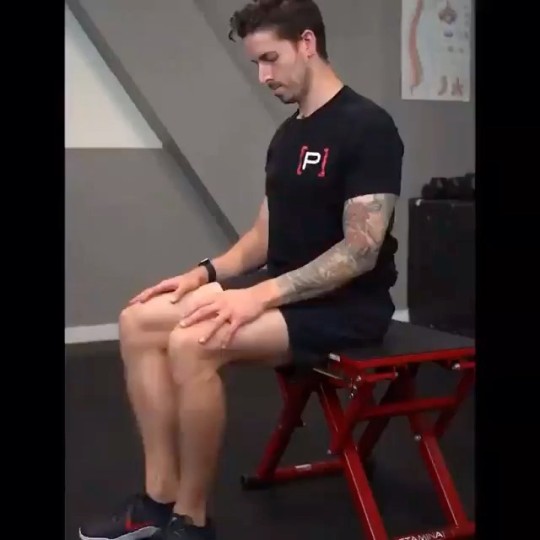
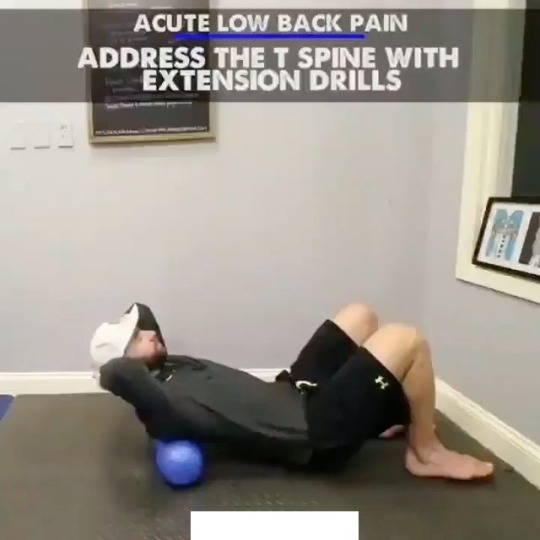
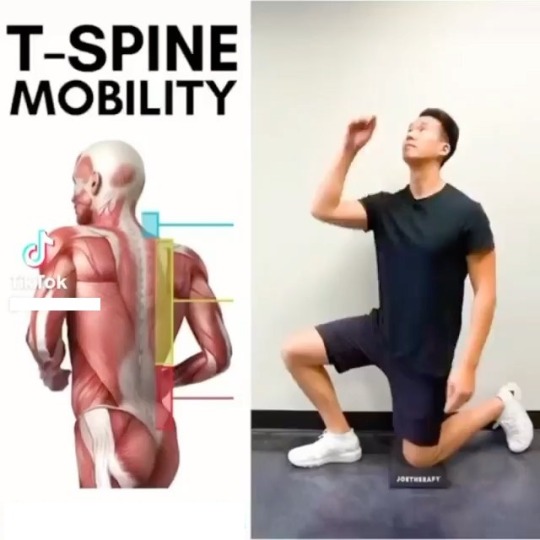
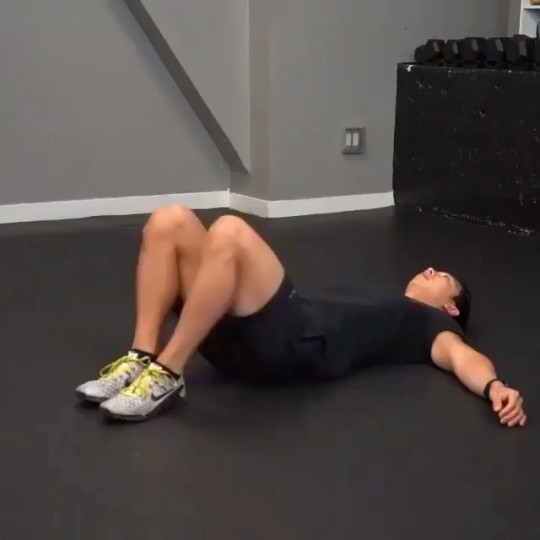

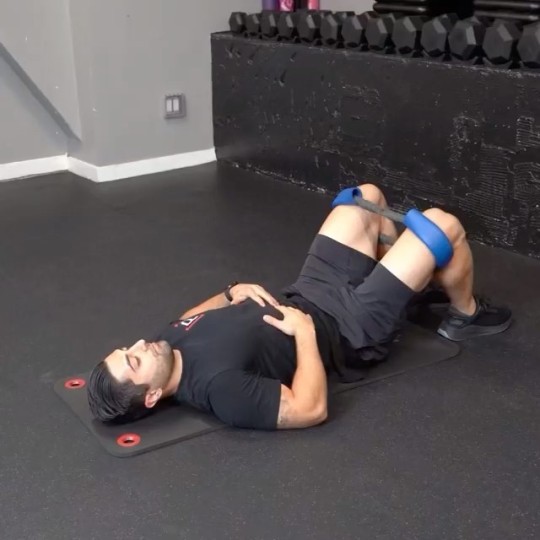
When it comes to functional movement and overall athletic performance, having a strong and mobile thoracic spine, also known as the T-spine, is crucial. The thoracic spine plays a significant role in the stability and flexibility of the upper body, affecting everything from posture to shoulder and neck mobility. In this article, we will delve into the importance of T-spine mobility, explore its benefits, and provide you with effective exercises to improve your T-spine mobility and enhance your overall performance.
Understanding the Thoracic Spine
The thoracic spine consists of twelve vertebrae located in the upper and mid-back region. Unlike the lumbar spine, which is built for stability, the thoracic spine is designed to allow for rotation and flexion/extension. However, due to our sedentary lifestyles and prolonged hours spent sitting hunched over desks or screens, the T-spine tends to become stiff and immobile over time.
Why T-Spine Mobility Matters
Improved Posture: The T-spine has a significant impact on our posture. When the thoracic spine is mobile, it allows the shoulders to sit properly, preventing rounded shoulders and a forward head posture. A mobile T-spine promotes an upright posture, reducing the risk of musculoskeletal imbalances and associated pain.
Increased Shoulder Mobility: The T-spine and shoulder girdle work together to produce optimal shoulder movement. A stiff T-spine restricts the range of motion in the shoulders, limiting overhead reach, throwing mechanics, and other upper body movements. By improving T-spine mobility, you can enhance your shoulder mobility and reduce the risk of shoulder injuries.
Enhanced Breathing Mechanics: The T-spine plays a vital role in proper breathing mechanics. When the thoracic spine is immobile, it limits the expansion of the ribcage during inhalation, leading to shallow breathing patterns. By improving T-spine mobility, you can restore optimal breathing mechanics, improving oxygen intake and overall respiratory function.
Injury Prevention: Stiffness in the T-spine can result in compensatory movement patterns, putting additional stress on neighboring joints such as the neck, shoulders, and lower back. By improving T-spine mobility, you can reduce the risk of overuse injuries and prevent unnecessary strain on other areas of the body.
Exercises for T-Spine Mobility
Thoracic Spine Foam Rolling: Lie on your back with a foam roller positioned horizontally beneath your upper back. Support your head with your hands, and slowly roll up and down the foam roller, targeting the T-spine. Pause at any tender spots, allowing the pressure to release tension. Perform for 1-2 minutes daily.
Cat-Camel Stretch: Begin on your hands and knees, aligning your wrists under your shoulders and your knees under your hips. Slowly round your back towards the ceiling, tucking your chin to your chest (cat pose). Then, reverse the movement by arching your back, lifting your chest and tailbone towards the ceiling (camel pose). Repeat for 10-12 repetitions, focusing on smooth and controlled movement.
Quadruped Thoracic Rotation: Start in the same hands and knees position as the cat-camel stretch. Place one hand behind your head, keeping your elbow bent. Slowly rotate your upper body and reach your elbow towards the ceiling, opening up your chest and following your hand with your gaze. Return to the starting position and repeat on the other side. Perform 8-10 repetitions on each side.
Thread the Needle: Begin on all fours, with your wrists under your shoulders and your knees under your hips. Extend one arm straight in front of you, then thread it underneath your opposite arm, reaching as far as you can comfortably. Rotate your upper body and look towards the ceiling. Hold the stretch for 20-30 seconds, then return to the starting position and repeat on the other side.
Wall Angels: Stand with your back against a wall, your feet shoulder-width apart, and a slight bend in your knees. Position your arms at a 90-degree angle, with your elbows and wrists touching the wall. Slowly slide your arms up and down the wall while maintaining contact with your wrists, elbows, and back. Perform 10-12 repetitions, focusing on maintaining proper posture and engaging the muscles around the shoulder blades.
Conclusion
A mobile thoracic spine is essential for optimal movement and function of the upper body. By incorporating regular T-spine mobility exercises into your fitness routine, you can improve your posture, enhance shoulder mobility, optimize breathing mechanics, and reduce the risk of injuries. Remember, consistency is key when it comes to improving T-spine mobility, so make it a habit to prioritize these exercises and unlock the secret to a strong and flexible upper body.
1 note
·
View note
Text
10 Effective Tips for Natural Back Pain Relief: Say Goodbye to Discomfort!








Introduction:
Dealing with back pain can be incredibly challenging and disruptive to your daily life. Whether it's caused by poor posture, muscle strain, or a sedentary lifestyle, finding relief is crucial for restoring your comfort and mobility. Instead of relying solely on medication, why not explore natural remedies that can help alleviate your back pain? In this article, we will share ten effective tips for natural back pain relief that can make a significant difference in your well-being.
Maintain Good Posture:
One of the most critical factors in preventing and reducing back pain is maintaining good posture. Ensure that your spine is aligned, shoulders are relaxed, and feet are firmly planted on the ground when sitting or standing. Avoid slouching and make a conscious effort to sit and stand tall, distributing your body weight evenly.
Regular Exercise:
Engaging in regular physical activity is essential for a healthy back. Incorporate exercises that strengthen your core muscles, such as yoga, Pilates, or gentle stretching routines. Strengthening these muscles provides better support for your spine, reducing the risk of back pain.
Ergonomic Workstation Setup:
If you spend long hours sitting at a desk, it's crucial to create an ergonomic workstation. Invest in a chair that offers lumbar support, position your computer monitor at eye level, and ensure your keyboard and mouse are within comfortable reach. This setup promotes proper posture and reduces strain on your back.
Mindful Lifting Techniques:
Improper lifting techniques can strain your back muscles and lead to pain. Whenever lifting heavy objects, remember to bend your knees, engage your leg muscles, and lift with your legs rather than your back. Avoid twisting while lifting and ask for assistance if needed.
Heat and Cold Therapy:
Applying heat or cold therapy can provide temporary relief for back pain. Use a heating pad or take a warm bath to relax tense muscles and improve blood circulation. Alternatively, cold packs or ice packs can help reduce inflammation and numb the area, particularly within the first 48 hours of an injury.
Maintain a Healthy Weight:
Excess weight puts additional strain on your spine, leading to increased back pain. Maintain a healthy weight through a balanced diet and regular exercise. Shedding those extra pounds can significantly reduce the stress on your back and alleviate discomfort.
Practice Stress Management:
Chronic stress can exacerbate back pain or even be a contributing factor. Engage in stress management techniques such as meditation, deep breathing exercises, or engaging hobbies to relax your mind and body. Lowering stress levels can positively impact your back pain.
Supportive Mattress and Pillow:
Sleeping on a supportive mattress and using a pillow that aligns your spine properly can greatly contribute to back pain relief. Invest in a medium-firm mattress that provides adequate support and ensures your spine stays in a neutral position during sleep.
Gentle Massage and Stretching:
Regular gentle massages and stretching exercises can relieve muscle tension and promote relaxation. Consider seeking the help of a licensed massage therapist or explore self-massage techniques to target specific areas of discomfort.
Stay Hydrated:
Drinking an adequate amount of water daily is vital for maintaining healthy spinal discs. Hydration keeps your spinal discs nourished and functioning optimally. Make it a habit to drink enough water throughout the day and limit the consumption of dehydrating beverages like alcohol and caffeinated drinks.
Conclusion:
Back pain doesn't have to dominate your life. By implementing these ten natural tips for back pain relief, you can alleviate discomfort, improve your posture, and regain control over your daily activities. Remember, consistent effort and lifestyle adjustments are key to long-term relief. However, if your back pain persists or worsens
0 notes
Text
5 Tips to Prevent Low Back Flare-Up:






Introduction: Low back pain is a common condition that affects millions of people worldwide. It can be debilitating and significantly impact one's quality of life. While there are various causes of low back pain, it is crucial to adopt preventive measures to minimize the risk of flare-ups. In this article, we will explore five helpful tips to prevent low back flare-ups, focusing on exercises like Cat-Cow, Hip 90/90, Side Planks, and Bird Dog. Incorporating these exercises into your routine can help strengthen the core, improve posture, and enhance overall spinal health.
Cat-Cow: Promoting Spinal Flexibility Cat-Cow is a yoga pose that involves gentle spinal flexion and extension, promoting flexibility and mobility in the spine. To perform this exercise, start on all fours with your hands aligned under your shoulders and knees under your hips. As you inhale, arch your back and lift your head, creating a concave shape (the "Cow" pose). As you exhale, round your spine upwards, tucking your chin towards your chest (the "Cat" pose). This exercise helps to stretch and strengthen the muscles along the spine, relieving tension and reducing the risk of low back flare-ups.
Hip 90/90: Strengthening the Hips and Glutes The hip 90/90 exercise targets the hip muscles and glutes, which play a crucial role in supporting the lower back. Begin by sitting on the floor with one knee bent at a 90-degree angle in front of you and the other knee bent at a 90-degree angle behind you. Keep your spine straight and lean slightly forward until you feel a gentle stretch in your hip. Hold the position for a few seconds before switching sides. This exercise helps improve hip mobility, stability, and strengthens the glute muscles, relieving stress on the lower back.
Side Planks: Building Core Strength Core strength is essential for maintaining a stable and healthy spine. Side planks are an effective exercise that targets the muscles along the sides of your body, including the obliques and transverse abdominis. To perform a side plank, lie on your side with your forearm directly beneath your shoulder, legs extended, and feet stacked on top of each other. Lift your hips off the ground, creating a straight line from your head to your feet. Hold this position for 30-60 seconds on each side. Side planks improve core stability, promote proper posture, and reduce the risk of low back flare-ups.
Bird Dog: Enhancing Stability and Balance The Bird Dog exercise is a fantastic way to improve stability, balance, and strengthen the muscles in your back and abdomen. Begin on all fours, with your hands aligned under your shoulders and knees under your hips. Extend your right arm forward while simultaneously extending your left leg backward. Keep your core engaged and your spine in a neutral position. Hold this position for a few seconds before switching sides. Bird Dog helps improve the coordination of the muscles surrounding the spine, reducing the likelihood of low back flare-ups.
Consistency and Progression: Key to Long-Term Success While the aforementioned exercises are effective in preventing low back flare-ups, consistency and progression are vital for long-term success. Aim to incorporate these exercises into your routine at least three times per week, gradually increasing the duration and intensity over time. As your strength and flexibility improve, consider adding variations or additional exercises to challenge your muscles further. Remember to listen to your body and consult with a healthcare professional if you experience any persistent or worsening pain.
Conclusion: Preventing low back flare-ups requires a proactive approach that includes regular exercise and mindful movement. By incorporating exercises like Cat-Cow, Hip 90/90, Side Planks, and Bird Dog into your routine, you can strengthen your core, improve posture, and enhance spinal health. Remember to start slowly, progress gradually, and remain consistent in your efforts. By doing so, you can reduce the risk of low back pain, improve your overall well-being, and enjoy a healthier, pain-free life.
0 notes
Text
Yoga For Back Pain

Here are some yoga poses that can help relieve lower back pain:
Child's Pose (Balasana): Start on your hands and knees and slowly lower your hips back toward your heels, stretching your arms out in front of you. This pose can help stretch and lengthen the spine, providing relief for lower back pain.
Cat-Cow Stretch (Chakravakasana): Start on your hands and knees and alternate between arching your back up towards the ceiling (cow) and rounding it down towards the floor (cat). This gentle movement helps to stretch and strengthen the muscles in your back.
Downward-Facing Dog (Adho Mukha Svanasana): Start on your hands and knees, tuck your toes under and lift your hips up and back, straightening your arms and legs. This pose helps to stretch the entire spine and relieve tension in the back.
Cobra Pose (Bhujangasana): Lie on your stomach with your hands under your shoulders and slowly lift your chest up, keeping your elbows close to your sides. This pose helps to strengthen the muscles in your back and relieve pain.
Sphinx Pose (Salamba Bhujangasana): Lie on your stomach with your elbows under your shoulders and your forearms on the ground. Lift your chest up while keeping your lower ribs and pelvis on the ground. This pose helps to strengthen the spine and relieve tension in the back.
Pigeon Pose (Eka Pada Rajakapotasana): From a low lunge position, slide your right knee forward between your hands and extend your left leg back behind you. Lower down onto your forearms or a block, and hold for a few deep breaths. Repeat on the other side.
Thread the Needle Pose (Parsva Balasana): Start on your hands and knees and thread your right arm under your left arm, lowering your right shoulder and ear to the ground. Hold for a few deep breaths, then repeat on the other side.
Supine Twist (Supta Matsyendrasana): Lie on your back with your knees bent and feet on the ground. Drop your knees to the right, twisting your spine and extending your left arm out to the side. Hold for a few deep breaths, then repeat on the other side.
Remember, it's important to listen to your body and not push yourself too far in these poses. If you experience any pain or discomfort, stop immediately and seek advice from a yoga teacher or healthcare professional.
#mobility#anklemobility#calfworkout#calvesworkout#calves#shinsplints#mobilitytraining#mobilitywod#mobilityexercises#stretch#stretches#stretching#stretchingexercises#stretchingroutine#statenisland#newyorkcity#loumystretchandgrowth#stretchandgrow#movementismedicine#movementculture#movementheals#workoutathome#hamstringstretch#prehab#rehab#legstretch
14 notes
·
View notes
Text
8 steps yoga poses for back pain
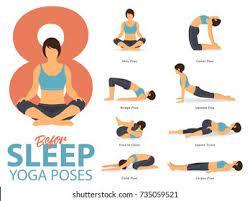
here are 8 yoga poses in a sequence that can help relieve back pain:
Child's Pose (Balasana): Start on your hands and knees and lower your hips back towards your heels while stretching your arms out in front of you. Take a few deep breaths here, feeling the stretch in your lower back.
Cat-Cow Stretch (Chakravakasana): Move into a tabletop position on your hands and knees, and alternate between arching your back up towards the ceiling (cow) and rounding it down towards the floor (cat). Repeat for a few rounds, focusing on the movement of your spine.
Downward-Facing Dog (Adho Mukha Svanasana): From tabletop, tuck your toes under and lift your hips up and back, straightening your arms and legs. Hold for a few deep breaths, feeling the stretch in your entire spine.
Low Lunge (Anjaneyasana): Step your right foot forward between your hands and lower your left knee down to the ground. Place your hands on your right knee and lift your chest up, feeling the stretch in your left hip flexor and right hamstring. Hold for a few deep breaths, then repeat on the other side.
Triangle Pose (Trikonasana): From a standing position, step your feet wide apart and turn your right foot out to the side. Reach your right hand down towards your shin or ankle, and extend your left arm up towards the ceiling. Hold for a few deep breaths, then repeat on the other side.
Extended Puppy Pose (Uttana Shishosana): Start on your hands and knees and walk your hands forward, lowering your chest down towards the ground while keeping your hips over your knees. Hold for a few deep breaths, feeling the stretch in your entire spine.
Bridge Pose (Setu Bandha Sarvangasana): Lie on your back with your knees bent and feet flat on the ground. Press into your feet to lift your hips up, keeping your shoulders and head on the ground. Hold for a few deep breaths, feeling the stretch in your lower back and thighs.
Corpse Pose (Savasana): Lie on your back with your legs extended and your arms at your sides. Close your eyes and take a few deep breaths, allowing your body to relax completely.
Remember, it's important to listen to your body and not push yourself too far in these poses. If you experience any pain or discomfort, stop immediately and seek advice from a yoga teacher or healthcare professional.
#mobility#anklemobility#calfworkout#calvesworkout#calves#shinsplints#mobilitytraining#mobilitywod#mobilityexercises#stretch#stretches#stretching#stretchingexercises#stretchingroutine#statenisland#newyorkcity#loumystretchandgrowth#stretchandgrow#movementismedicine#movementculture#movementheals#workoutathome#hamstringstretch#prehab#rehab#legstretch
0 notes
Text
Yoga for Back pain Relief
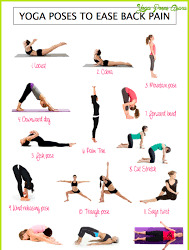
here are some yoga poses that can help relieve back pain:
Child's Pose (Balasana): Start on your hands and knees and slowly lower your hips back toward your heels, stretching your arms out in front of you. This pose can help stretch and lengthen the spine, providing relief for lower back pain.
Cat-Cow Stretch (Chakravakasana): Start on your hands and knees and alternate between arching your back up towards the ceiling (cow) and rounding it down towards the floor (cat). This gentle movement helps to stretch and strengthen the muscles in your back.
Downward-Facing Dog (Adho Mukha Svanasana): Start on your hands and knees, tuck your toes under and lift your hips up and back, straightening your arms and legs. This pose helps to stretch the entire spine and relieve tension in the back.
Cobra Pose (Bhujangasana): Lie on your stomach with your hands under your shoulders and slowly lift your chest up, keeping your elbows close to your sides. This pose helps to strengthen the muscles in your back and relieve pain.
Sphinx Pose (Salamba Bhujangasana): Lie on your stomach with your elbows under your shoulders and your forearms on the ground. Lift your chest up while keeping your lower ribs and pelvis on the ground. This pose helps to strengthen the spine and relieve tension in the back.
Remember, it's important to listen to your body and not push yourself too far in these poses. If you experience any pain or discomfort, stop immediately and seek advice from a yoga teacher or healthcare professional.#mobility#anklemobility#calfworkout#calvesworkout#calves#shinsplints#mobilitytraining#mobilitywod#mobilityexercises#stretch#stretches#stretching#stretchingexercises#stretchingroutine#statenisland#newyorkcity#loumystretchandgrowth#stretchandgrow #movementismedicine#movementculture#movementheals#movementismedicine#workoutathome#hamstringstretch#prehab#rehab#legstretch
#here are some yoga poses that can help relieve back pain:#Child's Pose (Balasana): Start on your hands and knees and slowly lower your hips back toward your heels#stretching your arms out in front of you. This pose can help stretch and lengthen the spine#providing relief for lower back pain.#Cat-Cow Stretch (Chakravakasana): Start on your hands and knees and alternate between arching your back up towards the ceiling (cow) and ro#Downward-Facing Dog (Adho Mukha Svanasana): Start on your hands and knees#tuck your toes under and lift your hips up and back#straightening your arms and legs. This pose helps to stretch the entire spine and relieve tension in the back.#Cobra Pose (Bhujangasana): Lie on your stomach with your hands under your shoulders and slowly lift your chest up#keeping your elbows close to your sides. This pose helps to strengthen the muscles in your back and relieve pain.#Sphinx Pose (Salamba Bhujangasana): Lie on your stomach with your elbows under your shoulders and your forearms on the ground. Lift your ch#Remember#it's important to listen to your body and not push yourself too far in these poses. If you experience any pain or discomfort#stop immediately and seek advice from a yoga teacher or healthcare professional.#mobility#anklemobility#calfworkout#calvesworkout#calves#shinsplints#mobilitytraining#mobilitywod#mobilityexercises#stretch#stretches#stretching#stretchingexercises#stretchingroutine#statenisland#newyorkcity
1 note
·
View note
Text
Back Pain Relief Tips and Tricks

here are some tips for relieving back pain:
Exercise regularly: Regular exercise can help strengthen your back muscles and reduce the risk of injury. Low-impact exercises like swimming, walking, or yoga can be particularly helpful.
Maintain good posture: Avoid slouching or leaning forward when sitting or standing for long periods. Use a chair with good back support and keep your feet flat on the floor.
Use heat or cold therapy: Applying heat or cold to the affected area can help reduce pain and inflammation. Use a heating pad or hot water bottle for 15-20 minutes at a time, or wrap an ice pack in a towel and apply for 10-15 minutes at a time.
Practice relaxation techniques: Stress can cause tension in the muscles of the back, exacerbating pain. Try relaxation techniques like deep breathing, meditation, or yoga to help reduce stress and tension.
Consider over-the-counter pain relief: Over-the-counter pain medications like ibuprofen or acetaminophen can help relieve pain and reduce inflammation.
Get a massage: A massage therapist can help loosen tight muscles and improve circulation, which can relieve pain and promote healing.
Maintain a healthy weight: Excess weight can put strain on the back muscles and spine. Maintaining a healthy weight can help reduce the risk of back pain.
Remember, if your back pain is severe or persists for more than a few days, it's important to seek medical advice from a doctor or physical therapist. #mobility#anklemobility#calfworkout#calvesworkout#calves#shinsplints#mobilitytraining#mobilitywod#mobilityexercises#stretch#stretches#stretching#stretchingexercises#stretchingroutine#statenisland#newyorkcity#loumystretchandgrowth#stretchandgrow#movementismedicine#movementculture#movementheals#movementismedicine#workoutathome#hamstringstretch#prehab#rehab#legstretch
#mobility#anklemobility#calfworkout#calvesworkout#calves#shinsplints#mobilitytraining#mobilitywod#mobilityexercises#stretch#stretches#stretching#stretchingexercises#stretchingroutine#statenisland#newyorkcity#loumystretchandgrowth#stretchandgrow#movementismedicine#movementculture#movementheals#workoutathome#hamstringstretch#prehab#rehab#legstretch
0 notes
Text
Release back pain
Exercise can be helpful in relieving and preventing lower back pain. Here are some exercises that can be beneficial:
Pelvic tilt: Lie on your back with your knees bent and feet flat on the ground. Tighten your abdominal muscles and press your lower back into the ground. Hold for 5 seconds and release.
Knee-to-chest stretch: Lie on your back with your knees bent and feet flat on the ground. Bring one knee up to your chest and hold for 15-30 seconds. Repeat with the other leg.
Bird dog: Start on your hands and knees. Lift your right arm and left leg straight out, keeping your back straight. Hold for a few seconds and then switch sides.
Bridge: Lie on your back with your knees bent and feet flat on the ground. Lift your hips up toward the ceiling, squeezing your glutes. Hold for a few seconds and then lower back down.
Cat-cow stretch: Start on your hands and knees. Arch your back up like a cat and then lower it down like a cow. Repeat several times.
Cobra pose: Lie on your stomach with your hands under your shoulders. Press up through your hands, lifting your chest and arching your back. Hold for a few seconds and then lower back down.
Child's pose: Kneel on the ground and stretch your arms forward, lowering your forehead to the mat. Hold for several seconds.
Remember to start slowly and gradually increase the intensity and duration of your exercises. If you experience pain or discomfort during any exercise, stop and consult with a medical professional.
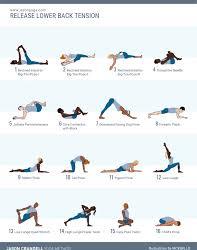
#Exercise can be helpful in relieving and preventing lower back pain. Here are some exercises that can be beneficial:#Pelvic tilt: Lie on your back with your knees bent and feet flat on the ground. Tighten your abdominal muscles and press your lower back in#Knee-to-chest stretch: Lie on your back with your knees bent and feet flat on the ground. Bring one knee up to your chest and hold for 15-3#Bird dog: Start on your hands and knees. Lift your right arm and left leg straight out#keeping your back straight. Hold for a few seconds and then switch sides.#Bridge: Lie on your back with your knees bent and feet flat on the ground. Lift your hips up toward the ceiling#squeezing your glutes. Hold for a few seconds and then lower back down.#Cat-cow stretch: Start on your hands and knees. Arch your back up like a cat and then lower it down like a cow. Repeat several times.#Cobra pose: Lie on your stomach with your hands under your shoulders. Press up through your hands#lifting your chest and arching your back. Hold for a few seconds and then lower back down.#Child's pose: Kneel on the ground and stretch your arms forward#lowering your forehead to the mat. Hold for several seconds.#Remember to start slowly and gradually increase the intensity and duration of your exercises. If you experience pain or discomfort during a#stop and consult with a medical professional.#backpainrelief#clean eating#gym life#gymmotivation#healthblr#nutrition#bodybuilding
12 notes
·
View notes
Text
Lower Back Pain Excersize
Exercise can be helpful in relieving and preventing lower back pain. Here are some exercises that can be beneficial:
Pelvic tilt: Lie on your back with your knees bent and feet flat on the ground. Tighten your abdominal muscles and press your lower back into the ground. Hold for 5 seconds and release.
Knee-to-chest stretch: Lie on your back with your knees bent and feet flat on the ground. Bring one knee up to your chest and hold for 15-30 seconds. Repeat with the other leg.
Bird dog: Start on your hands and knees. Lift your right arm and left leg straight out, keeping your back straight. Hold for a few seconds and then switch sides.
Bridge: Lie on your back with your knees bent and feet flat on the ground. Lift your hips up toward the ceiling, squeezing your glutes. Hold for a few seconds and then lower back down.
Cat-cow stretch: Start on your hands and knees. Arch your back up like a cat and then lower it down like a cow. Repeat several times.
Cobra pose: Lie on your stomach with your hands under your shoulders. Press up through your hands, lifting your chest and arching your back. Hold for a few seconds and then lower back down.
Child's pose: Kneel on the ground and stretch your arms forward, lowering your forehead to the mat. Hold for several seconds.
Remember to start slowly and gradually increase the intensity and duration of your exercises. If you experience pain or discomfort during any exercise, stop and consult with a medical professional.
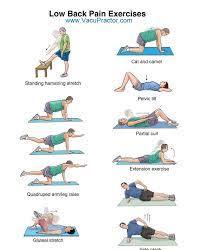
#.#mobility#anklemobility#calfworkout#calvesworkout#calves#shinsplints#mobilitytraining#mobilitywod#mobilityexercises#stretch#stretches#stretching#stretchingexercises#stretchingroutine#statenisland#newyorkcity#loumystretchandgrowth#stretchandgrow#movementismedicine#movementculture#movementheals#workoutathome#hamstringstretch#prehab#rehab#legstretch#backpainrelief#clean eating#bodybuilding
0 notes
Text
Lower Back Pain Relief Tips
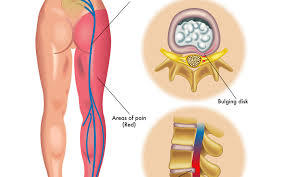
Lower back pain can be a common and uncomfortable issue. Here are some tips for relieving lower back pain:
Stretching: Gentle stretching can help to ease lower back pain. Try stretching your hamstrings, hip flexors, and lower back muscles.
Heat and cold therapy: Applying heat or cold to your lower back can help to reduce pain and inflammation. You can use a heating pad or a cold pack for this.
Good posture: Maintaining good posture can help to prevent and relieve lower back pain. Keep your shoulders back, spine straight, and feet flat on the ground when sitting or standing.
Exercise: Gentle exercise can help to strengthen the muscles in your lower back, which can reduce pain. Walking, swimming, and yoga are all good options.
Over-the-counter pain relief: Over-the-counter pain relief medication, such as ibuprofen or acetaminophen, can help to reduce lower back pain. However, it's important to use these medications as directed.
Massage: Massage can help to ease tension in your lower back muscles, which can relieve pain. You can use a foam roller or see a professional masseuse.
Improve sleeping habits: Sleeping on a firm mattress with a pillow under your knees can help to relieve lower back pain.
Reduce stress: Stress can cause tension in your muscles, including your lower back. Try to find ways to reduce stress, such as practicing mindfulness or yoga.
Remember to consult with a medical professional if your lower back pain persists or becomes severe.
#.#mobility#anklemobility#calfworkout#calvesworkout#calves#shinsplints#mobilitytraining#mobilitywod#mobilityexercises#stretch#stretches#stretching#stretchingexercises#stretchingroutine#statenisland#newyorkcity#loumystretchandgrowth#stretchandgrow#movementismedicine#movementculture#movementheals#workoutathome#hamstringstretch#prehab#rehab#legstretch
0 notes
Text
10 yoga for back pain fix
Yoga can be a helpful practice for relieving back pain and improving flexibility and strength. Here are 10 yoga poses that may help:
Child's Pose: Kneel on the floor and stretch your arms forward, lowering your forehead to the mat.
Cat-Cow Pose: Come onto your hands and knees, rounding your spine on the exhale and arching your back on the inhale.
Downward-Facing Dog: Start on your hands and knees, then lift your hips up and back, straightening your legs and pressing your hands into the mat.
Cobra Pose: Lie on your stomach and press up through your hands, lifting your chest and arching your back.
Standing Forward Bend: Stand with your feet hip-width apart and fold forward, reaching for your toes.
Triangle Pose: Stand with your feet wide apart, turn your right foot out, and reach your right hand toward your right foot. Look up at your left hand.
Pigeon Pose: Start in a lunge position with your right foot forward, then bring your left knee forward and stretch your right leg back. Fold forward over your right leg.
Bridge Pose: Lie on your back with your knees bent and feet on the floor, then lift your hips up toward the ceiling.
Seated Forward Bend: Sit with your legs straight out in front of you and fold forward, reaching for your toes.
Legs-Up-The-Wall Pose: Lie on your back with your legs up against a wall, forming a 90-degree angle with your body.
Remember to listen to your body and not push yourself too far. If you experience pain or discomfort during any pose, stop and consult with a medical professional.

#.#mobility#anklemobility#calfworkout#calvesworkout#calves#shinsplints#mobilitytraining#mobilitywod#mobilityexercises#stretch#stretches#stretching#stretchingexercises#stretchingroutine#statenisland#newyorkcity#loumystretchandgrowth#stretchandgrow#movementismedicine#movementculture#movementheals#workoutathome#hamstringstretch#prehab#rehab#legstretch
0 notes
Text
Back Pain Relief Tips

Back pain can be debilitating and make it difficult to carry out daily activities. Here are some tips for relieving back pain:
Exercise: Gentle exercise can help to strengthen the muscles in your back, which can help to reduce pain. Walking, swimming, and yoga are all good options.
Heat and cold therapy: Applying heat or cold to your back can help to reduce pain and inflammation. You can use a hot water bottle or a cold pack for this.
Stretching: Stretching can help to loosen up tight muscles and improve flexibility, which can reduce pain. Gentle stretches like the knee-to-chest stretch or the cat-cow stretch can be helpful.
Posture: Maintaining good posture can help to prevent back pain. Make sure your shoulders are back and your spine is straight when sitting or standing.
Massage: Massage can help to ease tension in your muscles, which can relieve pain. You can use a foam roller or see a professional masseuse.
Over-the-counter pain relief: Over-the-counter pain relief medication, such as ibuprofen or acetaminophen, can help to reduce back pain. However, it's important to use these medications as directed.
Remember to consult with a medical professional if your back pain persists or becomes severe.
#workout#exercise#back#backpain#fitness#pilates#strong#backpainrelief#lowbackpain#backworkout#bodybuilding#half marathon#gymmotivation#gym life#clean eating#nutrition#healthblr#healthy eating#runblr
0 notes